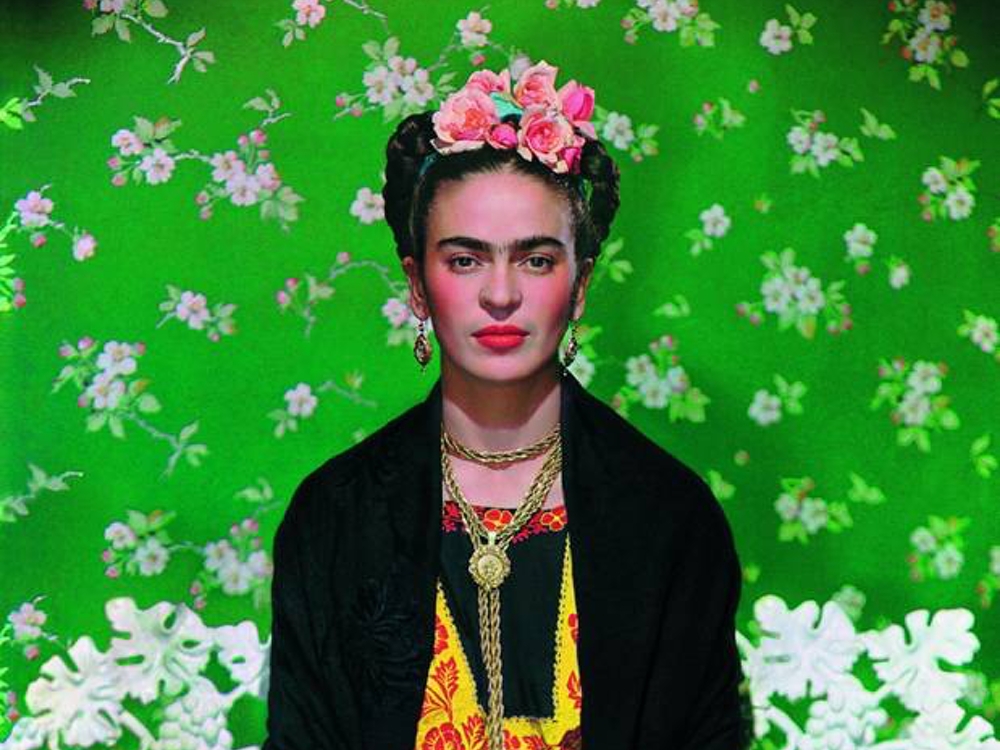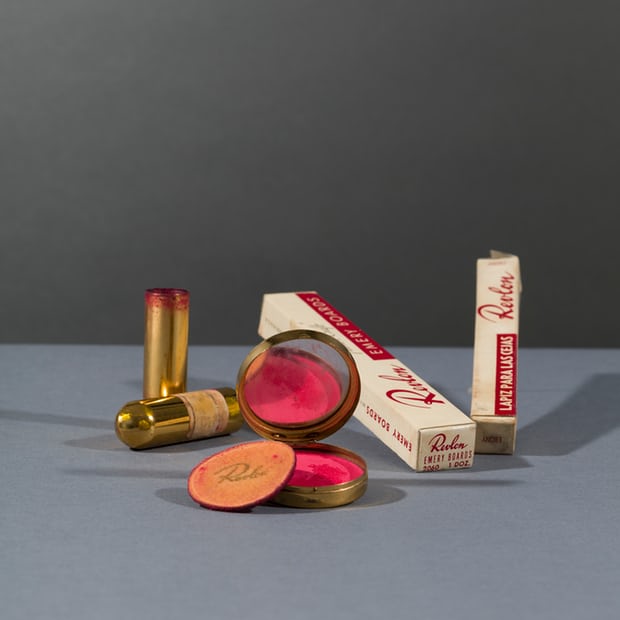
Frida Kahlo: Making Herself Up
June 16th – November 4th, 2018
Victoria and Albert Museum: Cromwell Road, London SW7 2RL
In 2018, Frida Kahlo remains a bonafide icon. Though Kahlo’s paintings are enduring masterpieces that critics continue to praise, it’s the woman herself who has garnered the public’s attention in recent years. A disabled feminist who was openly bi-sexual, Kahlo has become a celebrated symbol for a range of minority groups, including Chicanos and the LGBTQ community.
The curiosity surrounding Kahlo’s personal life has culminated in a new exhibition, “Frida Kahlo: Making Herself Up,” opening on June 16th at London’s Victoria and Albert Museum. The show features a collection of over 200 personal items belonging to the artist. When Kahlo passed away in 1954, her husband, fellow Mexican painter Diego Rivera, locked her possessions in a room and requested that it not be opened until after his death. Though Rivera passed in 1957, his archive of Kahlo’s belongings remained sealed off until 2004 in “The Blue House,” Kahlo’s childhood home where she lived in with Rivera.

Rivera’s treasure trove of personal ephemera includes Kahlo’s clothing, makeup (such as her favorite lipstick, Everything’s Rosy by Revlon) medicine, jewelry and letters. Claire Wilcox, senior curator of fashion at the V&A, described the items as “the real material evidence of the way Kahlo constructed her identity.” Wilcox also dubbed the artist a significant “countercultural and feminist symbol.”
Despite her current fame as an artist and icon, Kahlo was best known as the wife of prominent muralist Diego Rivera and former lover of Leon Trotsky during her lifetime. Few had heard of Kahlo outside of Mexico, despite the fact that she exhibited alongside Pablo Picasso and Marcel Duchamp.

Today, Kahlo is a celebrated art and style icon. In fact, The Guardian dubbed her the Style Muse of 2017. Even British Prime Minister Theresa May was spotted sporting a bracelet with the artist’s face on it at the Conservative Party Conference.
“Frida Kahlo: Making Herself Up” will explore how the artist used both art and clothing as forms of empowerment in the face of her personal struggles. It’s well known that Kahlo had a difficult life—she battled polio as a child and survived a near-fatal bus crash in her teens. The accident left her incapacitated for long periods of time, and her injuries left her infertile.
Kahlo’s unique appearance was as non-conformist then as it would be today. She refused to pluck her famous monobrow, and wore traditional Tehuana garments, 22 of which are featured in the exhibition. The plaster corsets Kahlo wore to support her back, which was displaced in the bus accident, are also on view. Even though her health struggles were a constant for most of her 47 years, Kahlo attempted to personalize her pain by decorating her corsets with everything from communist symbols to a fetus.

“She was taking control,” Wilcox explained. “She was subjected to wearing these very uncomfortable corsets in order to support her back and I think she just wanted to take possession of them.”
A year before her death, the artist had to have her right leg, which was already withered due to polio, amputated below the knee to prevent the spread of gangrene. A situation that would be devastating to most, Kahlo made it her own. “Being Frida, it’s quite—if it’s possible—a joyful object,” Wilcox said of Kahlo’s prosthetic calf. “She has clad it in a bright red leather boot and had it embroidered and tied bells on to it.”

The exhibition at the V&A builds on a similar that opened at Mexico’s Frida Kahlo Museum in 2012. On Kahlo’s enduring charm, V&A co-curator Circe Henestrosa said,“During her lifetime she was sometimes viewed as ‘exotic’ or patronized and ‘othered’ but today her intersectional, and complex, self-constructed identity is better understood. The dress choices she made reflected an intuitive ability to use a bold visual image in a time when men dominated the art world.”


